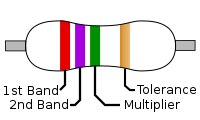Electronics has branches as follows:
- Digital electronics
- Analog electronics
- Microelectronics
- Circuit design
- Integrated circuits
- Optoelectronics
- Semiconductor devices
- Embedded systems
we have enlightened the very important field of Digital Electronics i.e. Binary Arithmetic and Boolean algebra. And we have discussed about them in elaborated manner. From binary addition, binary subtraction, binary multiplication and binary division to the basics of Boolean algebra. After that we have written topics about various types of codes such as ASCII code, Gray Code, Hamming code which have made the input output format very easy. Then various types of logic gates (AND gate, OR gate, NOT gate, NAND gate, NOR gate, EX-OR gate) have been discussed in an elaborated manner with diagrams, explanations and truth tables to make each one of them very easy to understand.

































 As reverse bias
As reverse bias